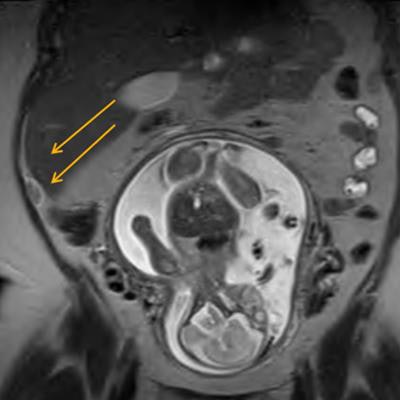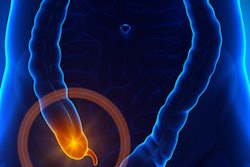
It may not be much of a surprise that MRI was faster than ultrasound for evaluating adolescent females presenting with abdominal pain that could be appendicitis in a new study, published online May 4 in Academic Radiology. But the modality was also cheaper when the entire diagnostic pathway was considered.
The results suggest that MRI could be a good option for working up patients with suspected appendicitis, especially since its symptoms can be difficult to distinguish from other conditions, particularly in adolescent female patients, wrote a team led by Dr. Kelly Hagedorn of Texas Children's Hospital in Houston.
"These patients present a diagnostic challenge for clinicians as the symptoms of appendicitis can overlap those of adnexal pathologies such as ovarian torsion or hemorrhagic ovarian cysts," the researchers wrote. "In pediatric patients, ultrasound is often the initial imaging modality of choice for the workup of both appendicitis and adnexal pathology given its high diagnostic accuracy and lack of ionizing radiation." But the workup involves two separate ultrasound exams and, therefore, a good deal of time, the team noted.
That's why using MRI could be a good alternative, according to the group.
"MRI protocols specifically tailored for diagnosing appendicitis are fast and operator independent," Hagedorn and colleagues wrote. "Studies have repeatedly shown MRI diagnostic accuracy equal to or greater than that of ultrasound for this diagnosis. Pathologies with overlapping clinical presentations, such as adnexal pathologies but also nonpelvic diagnoses such as pyelonephritis or enteritis/colitis, can also be diagnosed by a single MRI exam."
How do the two modalities compare in terms of cost? It's an important question, especially as the transition from volume- to value-based healthcare means that reimbursement is increasingly based on outcomes achieved rather than the number of services performed, the team noted. So Hagedorn's group conducted a study to compare the time and cost of ultrasound with MRI for evaluating suspected appendicitis.
The researchers analyzed electronic medical record data from 231 abdominal or pelvic ultrasound exams and 52 MRI exams performed in adolescent females for suspected appendicitis. Hagedorn and colleagues used their hospital's accounting data to establish cost rates for personnel, equipment, facilities, and supplies for each type of exam, and calculated total costs for each exam "pathway." (Ultrasound requires two exams: an abdominal exam to evaluate for appendicitis and a pelvic exam to evaluate for adnexal pathology; performing both exams can take time since the abdominal exam requires an empty bladder, and the pelvic exam requires a full bladder.)
They found that the mean exam time for ultrasound was more than twice as long as MRI, while the mean cost for using ultrasound to assess for appendicitis in this patient population was 23% higher than that of MRI.
| Ultrasound vs. MRI to assess for appendicitis | ||
| Ultrasound | MRI | |
| Mean total time | 166 minutes | 75 minutes |
| Mean total cost | $258.33 | $209.97 |
The group acknowledged that MRI costs will vary by institution but concluded that the modality appears to be a viable -- and perhaps even preferable -- alternative to ultrasound for diagnosing appendicitis in adolescent female patients presenting with abdominal pain.
"Our results suggest that MRI may be an efficient and less costly exam than previously perceived," the authors wrote.



















